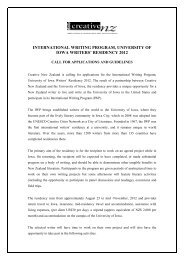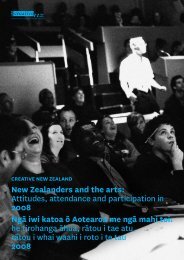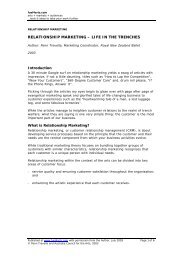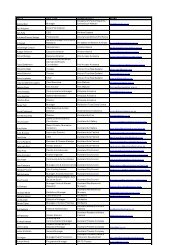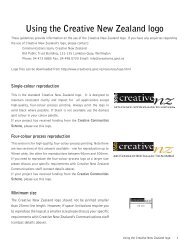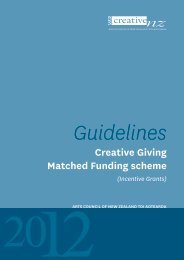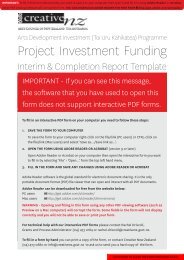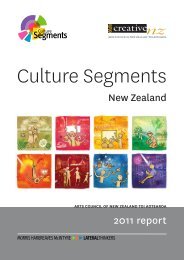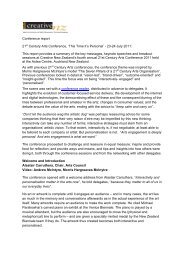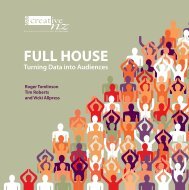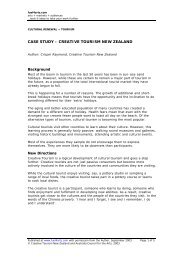Smart Arts - Creative New Zealand
Smart Arts - Creative New Zealand
Smart Arts - Creative New Zealand
- No tags were found...
You also want an ePaper? Increase the reach of your titles
YUMPU automatically turns print PDFs into web optimized ePapers that Google loves.
Indirect marketingThis section deals with the placement of generic advertising. This is usually the mostcostly part of your promotional campaign, so it is vital to keep your target market inmind when deciding where to place advertisements and what to say in them.Every advertisement you place should be aimed at a specific target market. For example,who you are trying to reach by advertising in a daily newspaper should inform decisionsabout what the advertisement says – and when and where it is placed.Indirect marketing doesn’t speak directly to a target group. Its reach is broad rather thanspecific although with research, you can concentrate your efforts more effectively. Thereare a number of avenues for this research:• speaking with your venue manager• speaking with other arts people in the region (e.g. festival organisers, producers)• sourcing any relevant <strong>Creative</strong> <strong>New</strong> <strong>Zealand</strong> research reports, including Know YourAudience: me möhio ki tö whakaminenga. All research reports are available from theResources section of its website (www.creativenz.govt.nz)• asking people within your target groups• getting statistics from newspapers and radio stations on their readers and listeners. Thisinformation gives you demographics such as age, income, geography and socio-economics.Another important statistic you can obtain from newspapers are the days of the weekthat your target markets are most likely to purchase a paper• using surveys you may have conducted during previous productions, recording whichadvertising is seen by which target markets• using your own knowledge and intuition.4Advertising copyA good advertisement is informative, stresses a benefit, takes people to the next step inthe buying process and encourages them to do it now. You can learn a lot by looking atthe way the commercial world uses advertising.Structure the advertisement according to the messages you want to get across. What’s yourbiggest draw card? Is it the title, the company name, or the name of the artist or writer?Keep your target audience in mind. The language you write for an advertisement shouldspeak to your target market in much the same way as your visuals. Language can be bothliteral and emotive.Don’t crowd the advertisement with too much copy. It still needs to work visually andthis is not the medium in which to get across a lot of information.When you’re writing advertising copy, remember:• the language should be simple and address the reader (e.g. use “I” and “you")• don’t be clever for the sake of being clever• the headline is the most important element• the most effective headlines appeal to the reader’s self-interest or give news• long headlines that say something are more effective than short ones that say nothing• specifics are more believable than generalities.(Source: David Ogilvy, Foreword to Tested Advertising Methods by John Caples, seeAppendix, page 73)<strong>Smart</strong> arts | Toi huatau38



